A global housing crisis is suffocating the middle class
Prices have risen by 54% in the United States, 32% in China and nearly 15% in the European Union between 2015 and 2024. Though policies have been implemented to increase supply and regulate rentals, their impact has been limited and the problem is getting worse
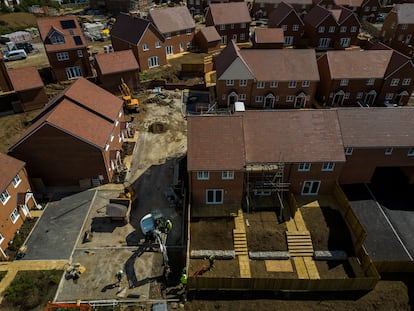
Housing access has become a critical issue worldwide, with cities that were once accessible reaching unsustainable price points. Solutions that have been proposed, like building more houses, capping rents, investing in subsidized housing and limiting the purchase of properties by foreigners have not stemmed the issue’s spread. Between 2015 and 2024, prices rose by 54% in the United States, 32% in China and by nearly 15% in the European Union (including by 26% in Spain), according to the Organisation for Economic Co-operation and Development.
The rise has been even greater in large cities; in some, rents have doubled during the same period. Nearly 9% of the population in the world’s more industrialized countries dedicate more than 40% of their earnings towards paying a lease or rent. As a crisis impacting a large part of the developed world, it’s become a key issue in the U.S. presidential campaign, and a priority for British Prime Minister Keir Starmer.
When did this start? How did it start? There’s no easy answer to the questions. One might trace the origin of the current crisis back to policies at the end of the 20th century, when many Western governments reduced the amount of public housing they were building. The arrival of Ronald Reagan and Margaret Thatcher heralded a turn towards liberalism in the West. Aging public housing, instead of receiving regular maintenance, was allowed to degrade and was often demolished without replacements being built.
Soon after, many cities found themselves with fewer resources and a growing demand that they were ill-equipped to satisfy. Marc Roark, law professor at the University of Tulsa, believes that these austerity policies played “an important role in the deterioration of these buildings, to the point that they posed a danger to families — as in the fire in the Grenfell Tower in London, where flames spread quickly through aluminum and plastic siding — and in the isolation of impoverished communities in areas with few economic opportunities.” Despite the real estate bubble at the beginning of the century, insufficient housing supply has persisted. The 2008 crisis halted all construction and caused prices to shoot up, above all, in urban areas.
A lack of access to services and jobs in major cities aggravated the situation. Economic growth has been concentrated in a handful of metropolitan hubs, leading to fierce competition for housing, which in turn creates gentrification. “The super-city model promoted around the world starting in the 2000s has created the belief that cities should attract talent and capital, with no consideration as to the consequences that it creates for the people already living in them. You can’t aspire to being the Silicon Valley of the Mediterranean and expect rents to stay low,” says Sergio Nasarre-Aznar, director of the UNESCO housing chair at Spain’s University Rovira I Virgili, who underlines the fact that a large part of the global crisis is due to a lack of regional cohesion.
In addition, housing is no longer seen as a basic right and is now viewed as a financial investment. “Speculation favors the construction of apartments that allow for the greatest amount of earnings, while low-cost houses, which are the most needed, have been ignored,” says Christoph Schmid, economic law professor at Germany’s University of Bremen. Firms like Zillow and Redfin play a role in this phenomenon by allowing investors to acquire properties without even being physically present. “Ten years ago, a real estate investor had startup costs and had to go to the property where they were interested in investing. Today, with these services, that’s no longer the case,” says Roark.
Salaries have not grown apace with real estate prices. In the EU, the median rent rose by 20% between 2010 and 2022, with rental and purchase prices growing by up to 48%, according to Eurostat. Underregulated markets are wreaking havoc, and in the United States and Spain, 20% of renters spend more than 40% of their income on housing, while in France, Italy, Portugal and Greece, that percentage varies between 10% and 15%, according to the OECD. Many countries have created programs aimed at increasing the future supply of public housing, but their effectiveness has yet to be determined and analysts say that results will be limited if smarter regional planning decisions are not made.

United States
An unholy cocktail of high interest rates and a rise in prices has complicated housing access, especially for those looking to buy their first home. Thirty-year mortgage rates, which are the most common type of financing, were as high as 8% last year, according to the St. Louis Federal Reserve. Although they have since dropped to 6.2%, that’s still high. Imbalance between supply and demand has impacted prices, which rose 5.7% in the 12 months prior to June and 58.5% over the past five years, according to the Federal Housing Finance Agency (FHFA). Prices have been rising steadily since 2012.
This blend of high prices and expensive mortgages is shutting an entire generation out from buying its first home. Alongside elevated rents, people are moving out of their family’s homes later and later and workforce mobility has been challenged.
The housing crisis has even played a role in the presidential campaign. Kamala Harris has proposed the construction of three million affordable homes in collaboration with the private sector. She wants to reduce bureaucracy to fast-track construction and regulate price-fixing by real estate companies. The centerpiece of her plan is a subsidy of up to $25,000 for first-time home buyers.
Donald Trump’s proposals are more generic, but run along the same lines. He’s suggested building homes on certain federal properties, tax incentives and unspecified assistance to first-time buyers, along with simplifying or repealing unnecessary regulations that drive up housing costs.
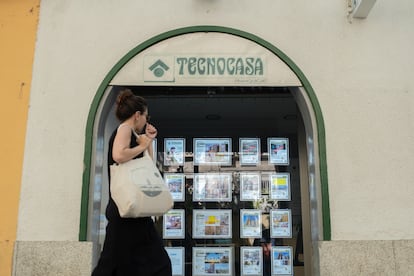
Spain
The issue has reached a critical point in recent years, driven by a significant gap between supply and demand. The Bank of Spain calculates that the housing market needs 600,000 more homes to achieve balance. Every year, some 90,000 homes are built, while 275,000 new households are created and non-resident demand accounts for an additional need of 60,000 homes. The situation has worsened with the demand for second homes. This, coupled with the lack of adequately located vacant homes in adequate state of repair, has contributed to a growing affordability crisis that largely affects middle and low-income families.
Availability of land on which to build is another major obstacle. Although Spain is one of the largest countries in the EU, properties that are available for construction are limited. Administrative obstacles and the slow process of allocating land are intensifying the crisis. Many experts are now calling for a reform of the urban planning system in order to allow for more agile, balanced development.
To combat the crisis, the government approved new housing legislation in May 2023. The regulation caps the maximum rent increase landlords can demand of their tenants, and allows communities to establish rent restrictions in particularly beleaguered areas. It also protects public housing properties, prohibiting their sale to investment firms, essentially extending land reserves to subsidized housing. At the same time, the country’s executive branch gave the green light to agreements to put an additional $6.7 billion towards the construction of more than 40,000 affordable rental homes, which must maintain their low prices for a minimum of 50 years. The Ministry of Housing has also committed to building more than 180,000 affordable homes for renters.
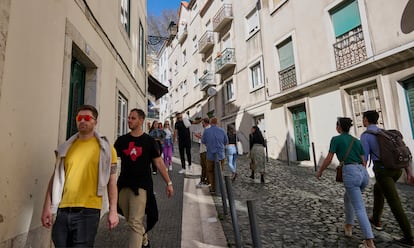
Portugal
Amid the worsening housing crisis, the previous socialist government opted for a radical policy departure. It increased pressure on tourist apartments, banned licenses to build new vacation homes throughout the majority of the country, increased tax burdens on property owners and gave more power to residents over the granting of licenses. It also ended golden visas associated with the purchase of property and established a 2% cap on rent raises for properties in the process of being renovated.
The current centrist government has rolled back some of these measures and presented a plan that bets on building new homes. Prime Minister Luís Montenegro has announced a plan to build 59,000 new homes by 2030, taking advantage of European funds. Fiscal and financial incentives are also being considered, in addition to the loosening of zoning regulations and the construction of sustainable housing in rural areas. Added to this are local initiatives ranging from small-scale projects, such as the decision made by tourist destination Cascais to offer 100 homes to teachers moving to the town, to major projects, like Lisbon’s plan to recover the city’s unoccupied properties in order to convert them to affordable rental housing.

Italy
In Italy, there’s much talk of a “housing emergency” and much debate over how to address the problem of tourist apartments, all of it unfurling during a standstill in the supply of sale and rental properties. Mayors are demanding support from the central government, which has been tasked with addressing the issue, and many have been critical of the law that it passed in December 2023 meant to regulate the real estate sector. That regulation primarily focused on dismantling the black market. In many cities, tourist apartments have multiplied, and it is increasingly difficult for residents and students to find a home. In Milan, an average room rents for $711 a month, followed by prices of $565 and $561 in Bologna and Rome, respectively.
Venice presents the most extreme case of this tourist invasion. In 2023, the city’s residents numbered 49,304, compared to its 49,693 tourist beds and holiday homes for rent. It is the only municipality that has the power to regulate its own rentals, and now plans to enforce a 120-day limit on the amount of time in a year that a landlord can rent a property to tourists. The city also wants to cap the number of property licenses that can be held by single person. This summer, the Venice government approved another controversial law which, it argues, presents one solution to the housing issue: mini-flats. The initiative lowers size requirements for a habitable apartment from 301 to 215 square feet. The opposition has dubbed it “the seven dwarfs law.”

France
Here, the problem is concentrated in the country’s large cities, and particularly in Paris. The capital city’s administration has enacted various measures aimed at slamming the brakes on rising housing prices. Rent increases have been limited to 3.5%, in order to mitigate the effects of inflation. The average price of buying property has risen above $12,000 per square meter in the capital. Those extravagant prices could soon extend to the rest of the country, given plummeting rates of construction of new housing.
Paris first announced its commitment to building public housing back in the 1950s, when there was a goal of it reaching 25% of total housing supply (today, that proportion stands at 21.2%) — but even so, the city’s real estate market remains a jungle for apartment hunters. Privately owned rental housing accounts for about 44% of Parisian housing stock. In the rest of the country, the situation is even worse in this respect, with approximately 5.5 million public housing units in a country of 33 million total units. The government of the new French Prime Minister Michel Barnier has announced that it will be paying special attention to the issue.
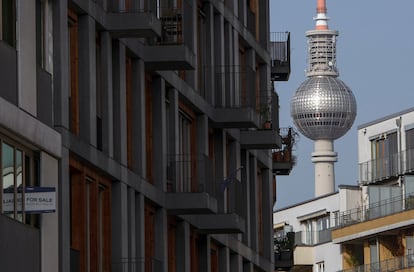
Germany
Germany is a nation of renters. While throughout Europe, around 70% of the population owns the apartment or house in which they live, in Germany, that figure stands at just 46%. In the capital of Berlin, it’s below 20%. Due to this, the country’s lack of housing and soaring rents are a source of concern for the Social Democratic, Alliance 90/Green and Free Democratic coalition government headed up by Chancellor Olaf Scholz. The country needs around 800,000 more apartments, a figure that has risen each year as the pace of construction slows due to high interest rates and the cost of materials and labor.
Nearly a decade ago, caps on rental prices entered into effect. The law stipulates that, upon signing a new contract, rent cannot exceed the average price in the area by more than 10%. But there are many exceptions: the cap does not apply to furnished, newly renovated or short-term rental apartments. Landlords have managed to circumvent it and in large cities like Berlin, are increasingly offering apartments with a few pieces of furniture, in order to evade the rent cap.
The federal government is betting that housing construction will increase supply and in so doing, bring down costs to buy and rent. According to the Ifo Institute for Economic Research, 245,000 homes were set to be built in Germany in 2023. This year, that estimate stands at 210,000. That’s a far cry from the ambitious goal set by the government to build 400,000 new homes a year, a quarter of which was meant to be state-subsidized housing.
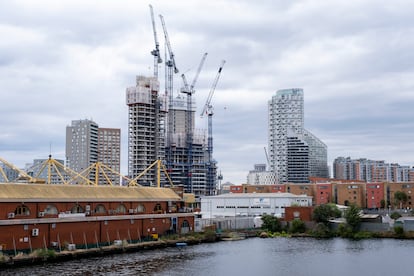
United Kingdom
The Labour Party promised a housing revolution during the electoral campaign from which it emerged victorious on July 4. It vowed to construct 300,000 new homes every year, adding up to a million and a half by the end of the current legislative period. Keir Starmer’s government will need to turn those promises into reality through new regulation, but so far, has announced few details as to how it plans to accomplish that. The new Deputy Prime Minister for Housing, Communities and Local Government, Angela Rayner, wants to expand the construction of public housing. Since the era of Margaret Thatcher, construction of housing for the country’s most vulnerable citizens has slowed.
At one point, Starmer suggested the possibility of building new residential cities from scratch, similar to the 1970s creation of Milton Keynes, which is located 49 miles northeast of London. But plans that are currently under consideration are more oriented towards the revitalization of run-down urban areas, featuring an improvement in infrastructure and public services. In addition to such projects, Starmer wants to increase current housing supply with campaigns to build more affordable housing and provide support for first-time buyers. The average price of a house in the United Kingdom, according to data from the national registry, is around $380,000.
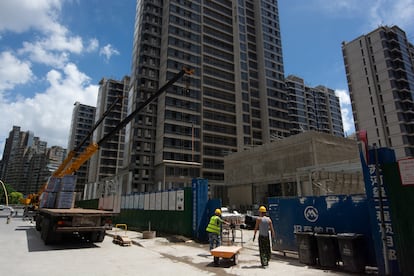
China
Housing access in China has been deeply impacted by the bursting of the real estate bubble. Houses aren’t selling, prices are plummeting, many buildings have not been completed, real estate giants are going bankrupt, developers are broke, banks are exposed to risk, local authorities have run out of revenue and the system only continues in its downward spiral. Paradoxically, it is now cheaper to buy a house, but fewer are being sold due to sluggish spending in a country where construction once represented a quarter of total GDP. Housing has traditionally been Chinese families’ great asset, making up around 65% of their wealth. Depreciation is a direct blow to the expectations that many held for the future.
Since the Chinese housing market liberalized at the end of the 1990s, prices have seen a meteoric increase, driven by large waves of migration from the countryside to the city. Many have had to make do with buying or renting small apartments located far away from their place of work.
The government has warned of “risks” that threaten key areas of the economy, such as the real estate industry. In May, it announced a stimulus package that included $42.25 billion in loans for subsidized housing projects and reduced down-payments on home purchases. It also encouraged local governments to buy undeveloped land and unsold real estate from developers. Numerous cities have announced measures aimed at making it easier to buy a home, including major metropolises like Shanghai and Shenzhen.
With reporting by Miguel Jiménez, Tereixa Constela, Iñigo Domínguez, Elena G. Sevillano, Rafa de Miguel, Guillermo Abril and Daniel Verdú.
Sign up for our weekly newsletter to get more English-language news coverage from EL PAÍS USA Edition
Tu suscripción se está usando en otro dispositivo
¿Quieres añadir otro usuario a tu suscripción?
Si continúas leyendo en este dispositivo, no se podrá leer en el otro.
FlechaTu suscripción se está usando en otro dispositivo y solo puedes acceder a EL PAÍS desde un dispositivo a la vez.
Si quieres compartir tu cuenta, cambia tu suscripción a la modalidad Premium, así podrás añadir otro usuario. Cada uno accederá con su propia cuenta de email, lo que os permitirá personalizar vuestra experiencia en EL PAÍS.
¿Tienes una suscripción de empresa? Accede aquí para contratar más cuentas.
En el caso de no saber quién está usando tu cuenta, te recomendamos cambiar tu contraseña aquí.
Si decides continuar compartiendo tu cuenta, este mensaje se mostrará en tu dispositivo y en el de la otra persona que está usando tu cuenta de forma indefinida, afectando a tu experiencia de lectura. Puedes consultar aquí los términos y condiciones de la suscripción digital.
More information
Archived In
Últimas noticias
Maduro pleads not guilty before the federal court in New York: ‘I am still the president of Venezuela’
A new test can detect Alzheimer’s from a finger prick
UN team enters Sudanese city of El Fasher after paramilitary massacre: ‘It’s like a ghost town’
A recipe for resistance: Indigenous peoples politicize their struggles from the kitchen
Most viewed
- Gilles Lipovetsky: ‘If you want to live better and fall in love, take Prozac, don’t look to philosophy’
- Alain Aspect, Nobel laureate in physics: ‘Einstein was so smart that he would have had to recognize quantum entanglement’
- Alvin Hellerstein, a 92-year-old judge appointed by Bill Clinton, to preside over Maduro’s trial in New York
- Maduro’s downfall puts China’s relationship with Venezuela to the test
- Why oil has been at the center of Venezuela-US conflicts for decades











































